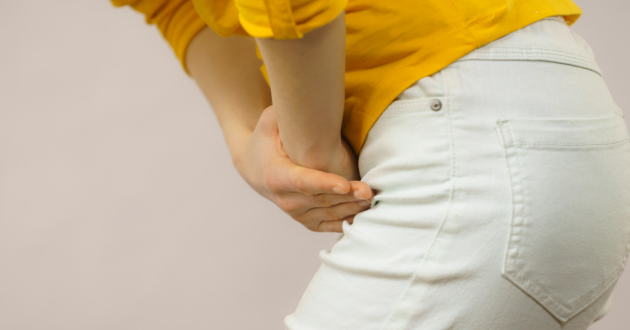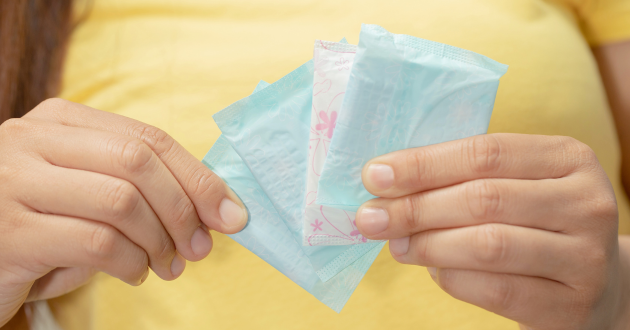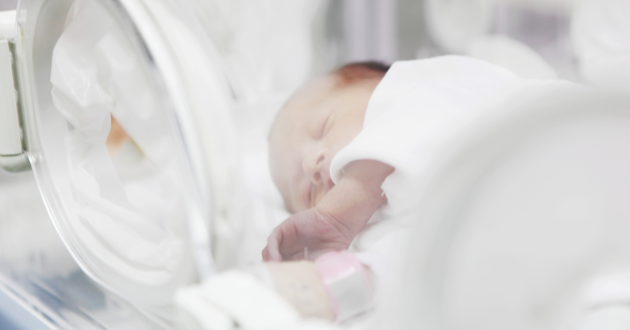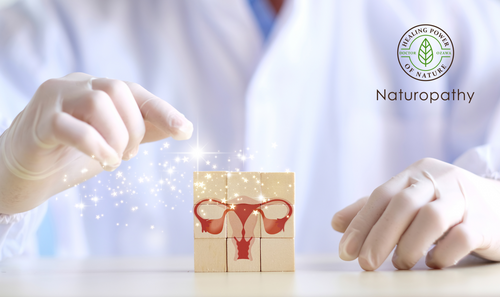Improvement of the Vaginal Flora
Improvement of the Vaginal Flora
Essential during pregnancy and menopause. Restoring women's confidence and health.
The importance of vaginal flora balance in maintaining a woman's health and beauty is becoming increasingly understood. The vagina contains many microorganisms, and these microbiotas are also referred to as the "vaginal flora" or "vaginal microbiome." The balance of good and bad bacteria is essential to the vaginal flora, and when the balance is correct, it supports a woman's health and beauty from the inside out. Conversely, when the balance is out of whack, a variety of disorders and symptoms can occur. This article explains the importance of vaginal flora and how to improve it for beauty and health.
What are the effects of vaginal flora imbalance?
The balance of bacteria in the vagina is essential to a woman's health. When this balance is disturbed, uncomfortable symptoms such as itching, unusual discharge, and pungent odor can occur, which can be caused by environmental changes, antibiotic use, hormonal fluctuations, and aging. This imbalance can also increase the risk of bacterial infections, candida infections, and urinary tract infections.

It is important to have the proper knowledge and care to maintain vaginal health, as uncomfortable symptoms such as itching, rashes, abnormal discharge, and odor can not only interfere with daily life, but can also negatively affect a woman's mental health and self-confidence. In fact, many women suffer from a vaginal bacterial imbalance that, once disturbed, is prone to recurrence. In addition, studies have shown that this imbalance can increase the risk of other gynecological conditions. Therefore, just like the gut flora, maintaining a balanced vaginal flora is necessary to support women's health.

How Vaginal Flora Works
Studies have shown that a healthy vaginal flora is rich in lactobacilli (Lactobacillus crispatus, Lactobacillus rhamnosus, Lactobacillus gasseri, and Lactobacillus gensenii). These lactobacilli produce lactic acid and hydrogen peroxide to help maintain an acidic vaginal pH of 3.5 to 4.5 and prevent the growth of unwanted bacteria. Hydrogen peroxide is a substance that eliminates most bad bacteria and Candida. Certain lactobacilli also stick to the vaginal lining and prevent harmful bacteria from sticking to it. They also produce chemicals that target Candida and other dangerous bacteria, creating an environment that makes it difficult for harmful bacteria to multiply.

Bifidobacteria, known for their intestinal regulatory properties, are another essential bacterium for the vaginal flora. Bifidobacteria support the growth and recovery of the vaginal lining and help promote healing of the vaginal lining. Certain types of bifidobacteria, such as lactobacilli, have also been shown to aid in the production of hydrogen peroxide and help maintain the balance of vaginal flora.
Studies have shown that when lactobacilli decrease and lactic acid and hydrogen peroxide production decrease, abnormalities in vaginal flora occur. When Lactobacillus crispatus, Lactobacillus gasseri, Lactobacillus genseni, Lactobacillus reuteri, and certain species of bifidobacteria are depleted, the risk of vaginal flora deterioration is significantly increased.
A vaginal flora dominated by bad bacteria also leads to the growth of bacteria that inhibit Lactobacillus and the formation of biofilms, which increase the survival of harmful bacteria and their resistance to the female immune system. It also promotes the growth of dangerous viruses and intercepts nutrients necessary for the development of healthy lactobacilli, thus blocking the development of healthy gut flora.
Bacterial Vaginosis
Although vaginal flora is essential, replacement of the lactobacillus-dominant vaginal flora with anaerobic bacteria (harmful bacteria) causes a disease called bacterial vaginosis. Bacterial vaginosis is the most common female genital disease of childbearing age.
The increase in anaerobic bacteria causes an increase in pH, an increase in the production of certain substances that cause foul-smelling discharge, and an increase in the shedding of the vaginal lining due to the metabolic byproducts of the harmful bacteria, resulting in an increase in the production of oily discharge.

In the United States, the incidence of bacterial vaginosis in women between the ages of 14 and 49 is as high as 29%. Most are asymptomatic and, therefore, unaware that they are infected with bacterial vaginosis, which, once exacerbated, tends to recur. Because it causes discomfort in the form of abnormal, smelly, itchy, and irritating discharge, bacterial vaginosis is one of the leading causes of gynecological visits for women.
Risks Caused by Bacterial Vaginosis
If it gets worse, bacterial vaginosis can cause pelvic inflammatory disease. It also increases the risk of group B streptococcal infection, which can cause pregnancy complications.
Miscarriage, chorioamnionitis, preterm delivery, and premature rupture of membranes have been strongly linked to bacterial vaginosis. Premature delivery due to bacterial vaginosis can lead to respiratory distress and intraventricular hemorrhage in premature infants, increasing the risk of adult disease.

Recent studies have shown that a decrease in lactobacilli and an overgrowth of Gardnerella and Prevotella bacteria may also reduce the success rate of fertility treatments. One study of 130 women undergoing IVF showed that only 9% of those with abnormal vaginal flora became pregnant, compared to a 35% success rate for those with normal vaginal flora. Another study found that 45% of women with repeated implantation failures had a lactobacilli deficiency in their vaginal flora.
Limitations of Antibiotic Therapy
Although antibiotic treatment of bacterial vaginosis is effective in the short term, antibiotics alone are not sufficient as more than 50% of cases recur. Also, in a study of pregnant women with asymptomatic bacterial vaginosis, two doses of antibiotics were ineffective in reducing hospitalization during pregnancy, preterm delivery, and postpartum infection, although about 80% of bacterial vaginosis cases improved. The results of these studies suggest that antibiotic treatment fails to increase protective vaginal flora and establish beneficial bacteria.
What affects the vaginal flora
Vaginal flora changes significantly with hormonal changes at each stage of a woman's life, from pre-pubertal to post-menopausal. Each woman has her own unique vaginal flora, which fluctuates over time and is influenced by diet, lifestyle, hormones, genetics, and age.

The vaginal and intestinal microbiomes each have their own unique microbiome. One of the key differences between the two is that in the gut, high diversity of the microbiome is a sign of health, while in the vagina it is unhealthy. Although the gut and vaginal flora are separate, the gut flora has a significant impact on the vaginal flora. Certain strains of Lactobacillus taken orally are transferred from the rectum to the vagina. Therefore, unhealthy gut flora also affects vaginal flora.
How to Improve Vaginal Flora for Beauty and Health
Studies have shown that certain probiotics support the repopulation of good bacteria and the balance of flora in the vagina. Certain strains of Lactobacillus acidophilus help optimize pH balance and maintain healthy vaginal flora. Taking these specific strains of bacteria is effective in supporting vaginal health.
A study of 36 women diagnosed with bacterial vaginosis evaluated the effectiveness of a yogurt drink containing 1 billion CFU each of Lactobacillus crispatus, rhamnosus, gasseri, and genseni. Women in the treatment group consumed the yogurt drink twice daily for 4 weeks. At the end of the study, 100% of the treatment group was cured of bacterial vaginosis, compared to 65% in the placebo group.
Another clinical trial tested the efficacy of lactobacillus-containing probiotics in bacterial vaginosis. After six weeks of daily use of lactobacillus probiotics containing Lactobacillus acidophilus and Lactobacillus rhamnosus, there was an improvement in vaginal flora.
In addition, oral administration of probiotics containing Lactobacillus rhamnosus was associated with healthier Lactobacillus crispatus and Lactobacillus genseni to help increase in the vaginal flora, studies have confirmed. Studies using specific strains of these lactobacilli have also suggested that some strains may support immunity against sensitive zone-specific viral infections.
Take Action! Maintaining vaginal flora in everyday life

Although the effect of diet on vaginal flora has been thought to be smaller than the effect of diet on the gut microbiome, studies have shown that diets high in fiber, low in sugar, low in fat, and rich in vitamins and minerals are associated with a lower risk of bacterial vaginosis.
Other studies have found that diets rich in betaine (an amino acid-based substance found in plants, seafood, etc.), folic acid, vitamin A, and calcium are inversely related to the severity of bacterial vaginosis.
Adequate hydration, avoidance of excessive stress, and adequate sleep are also crucial for maintaining vaginal flora. Incorporate these simple techniques into your daily routine to keep your vaginal flora in balance.
Conclusion

The key to solving women's specific problems lies in balancing the vaginal flora.
Vaginal flora balance is critical to women's health, especially Lactobacillus balance. And improving vaginal flora balance can help many women regain confidence, health, and a more fulfilling feminine life. Be sure to maintain a healthy vaginal microbiome through appropriate lactobacillus supplementation and dietary changes.
References
https://www.dynamed.com/approach-to/vulvovaginitis-approach-to-the-patient#GUID-3B8CED52-FF82-41C9-AB7E-FEA5EB7A347F,Nutrients. 2023 Apr 13;15(8):1862. doi: 10.3390/nu15081862.Lactobacillus Probiotics Improve Vaginal Dysbiosis in Asymptomatic Women Am J Obstet Gynecol . 2003 Oct;189(4):1202-8. doi: 10.1067/s0002-9378(03)00495-2. The potential for probiotics to prevent bacterial vaginosis and preterm labor Benef Microbes . 2018 Jan 29;9(1):35-50. doi: 10.3920/BM2017.0018. Epub 2017 Oct 25. Effect of a yoghurt drink containing Lactobacillus strains on bacterial vaginosis in women – a double-blind, randomised, controlled clinical pilot trial Benef Microbes . 2019 May 28;10(5):483-496. doi: 10.3920/BM2018.0129. Epub 2019 Apr 23. Impact of oral administration of four Lactobacillus strains on Nugent score – systematic review and meta-analysis Smith S and Ravel J, JPhysiol.2017; Manor O, et al.Nat Commun.2020 Amabebe E and Anumba D, Front. Med. 2018 Thoma, ME, et al.J Nutr. 2011 Tudden. ham S, et al,Reprod Health. 2019 Neggers Y H, et al.J Nutr. 2007 ACOG Practice Bulletin No.215,Obstet Gynecol, 2020 Yudin MH, Money DM.J Obstet Gynaecol Can. 2008 Haahr T, et al.Hum Reprod. Kadogami D, et al.J Rep Bio. 2020 Brad- shaw CS, et al.J Infect Dis. 2006 Bradshaw CS, Sobel JD.J Infect Dis.2016 Carey JC, et al.N Engl J Med. 2000
* These statements have not been evaluated by the Food and Drug Administration. This product is not intended to diagnose, treat, cure, or prevent any disease.

 US Dollar
US Dollar

